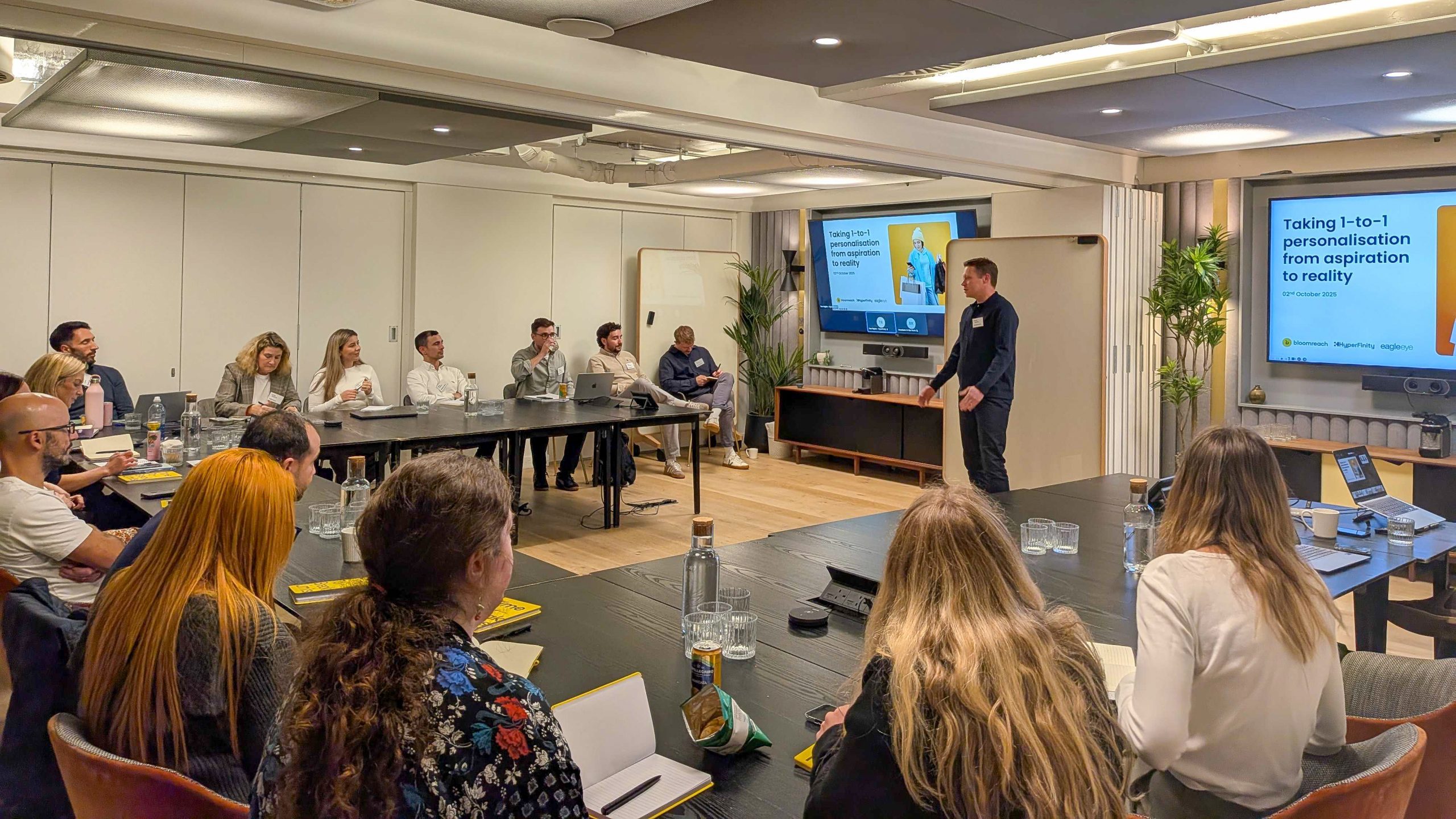
Key takeaways:
- Retailers’ progress with personalisation depends more on people than platforms.
- Emotional loyalty is measurable and commercially valuable.
- Senior buy-in makes or breaks data transformation.
- Small, consistent interventions beat big ambitions when it comes to personalisation.
We recently hosted a retail roundtable in Soho in collaboration with our partners Bloomreach and Eagle Eye. The session brought together senior marketers from leading retailers to share what’s really working when moving from broad segmentation to genuine one-to-one engagement.
The conversation was refreshingly honest, and focused on execution, measurement and how to make personalisation actually deliver commercial value, rather than just promise it.
Here’s what we learned.
Tech is still getting in the way.
Despite major investment, technology’s still one of the biggest blockers to retail personalisation. Many retailers described disconnected customer channels, data silos and gaps between online and offline journeys.
Even where the tools exist, adoption is uneven. Teams often struggle to use personalisation platforms consistently, and collaboration between marketing, trading and analytics can break down.
The majority of retailers have plenty of customer data – but not always a clear idea of where to focus. The message was simple: technology only delivers value when people, processes and priorities are aligned.
Loyalty means more than discounts.
A recurring theme was the need to move beyond constant offers. Short-term promotions drive quick sales but weaken long-term customer loyalty.
Retailers are now focused on creating emotional, personalised experiences that make shoppers feel valued without relying on heavy discounts. Small, human moments of recognition and relevance go further than blanket codes.
The goal is to make every interaction meaningful enough to build connection, not just conversion.
Emotion belongs in the data.
One of the most compelling discussions centred on how to measure emotion as part of a data-driven retail strategy. Marketers are starting to treat joy, satisfaction and delight as measurable data signals rather than soft factors.
They’re capturing unprompted feedback, short pulse surveys and behavioural indicators like rapid repeat orders after a service recovery. By analysing these signals alongside lifetime value, purchase frequency and churn risk, they can prove that emotion drives measurable commercial outcomes.
It’s a practical way to justify investing in customer experience while staying accountable for results.
Leadership buy-in changes everything.
Even the best technology and smartest strategy won’t deliver results without leadership support. Senior sponsorship is often the difference between pilot projects and genuine transformation.
When the C-suite champions personalisation, it unlocks budgets, cross-functional adoption and the freedom for teams to test, learn and scale. Without that backing, personalisation risks becoming an isolated initiative that never reaches its potential.
Keep it small, measurable and regular.
The retailers making the most progress have found a rhythm that works. Rather than chasing the idea of hyper-personalisation, they run a handful of focused, measurable interventions each quarter.
Each one has a clear test design, expected uplift and pre-aligned creative. Results are reviewed every two weeks, with weak tests stopped early and strong ones scaled up.
This approach keeps personalisation part of ‘business as usual’ rather than a side project.
A more pragmatic future.
The biggest shift happening right now isn’t technological. It’s cultural.
Retailers are moving away from one-off campaigns toward a mindset of continuous improvement. They’re blending emotional intelligence with operational discipline and measuring progress by rhythm, not hype.
The future of retail personalisation won’t be defined by who has the most data or the flashiest tech. It’ll be defined by who can turn insight into everyday action.
For the retailers that get it right, personalisation won’t feel like a project. It’ll feel like how they do business.
At HyperFinity, we help retailers turn personalisation from promise into performance. If you’d like to explore what’s possible, get in touch.


